
9 Helping Verbs... Download Scientific Diagram
Helping verbs, also known as auxiliary verbs, are words that come before the main verb in a sentence and provide additional meaning. They can indicate tense, aspect, or mood. Common helping verbs include "be" (am, is, are), "have" (has, had), "do " (does, did), and "will" (shall, should). Auxiliary Verb Tenses and Aspects

Helping Verbs Helping verbs, Classroom posters, Plurals
All Helping Verbs With Examples #1 Be Verbs (am, is ,are, was, were) I am working, You are writing. He is sleeping. I am going to the store. He is studying for his exam. They are playing soccer in the park. We are watching a movie tonight. The cat is sleeping on the couch. You are reading a book right now. My friends are coming over for dinner.
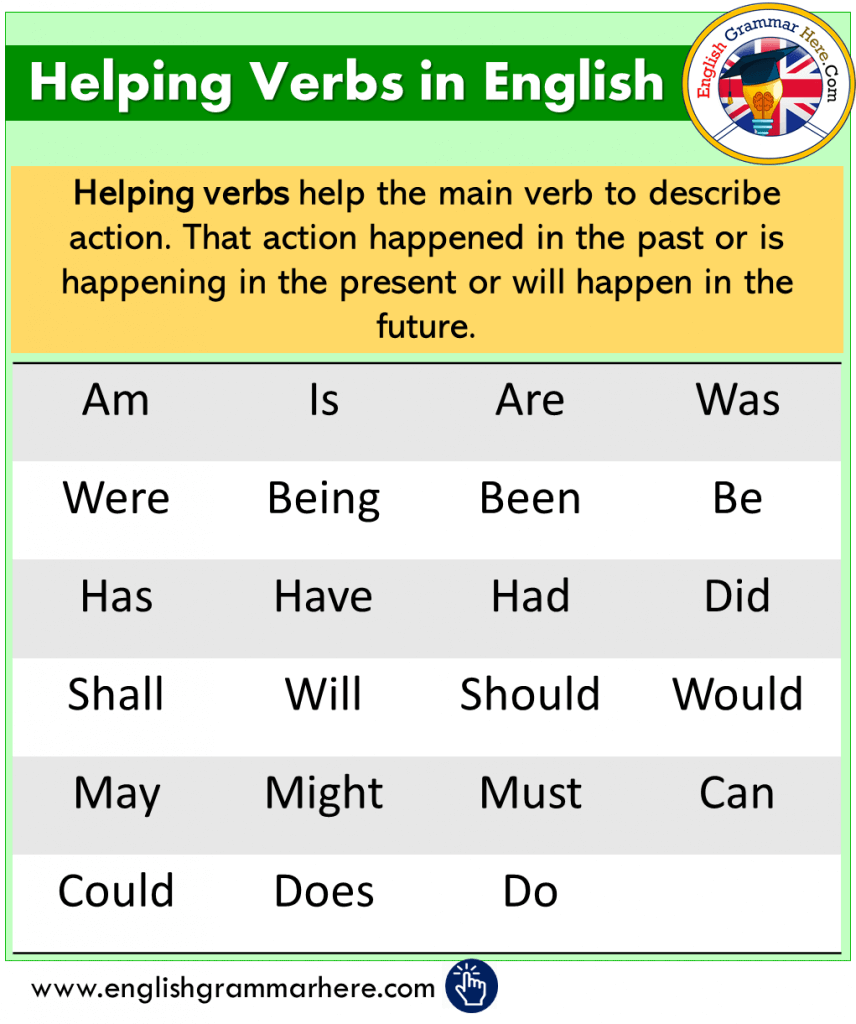
Helping Verbs, Meanings and Examples in English English Grammar Here
Helping verbs help the main action show WHEN an action occurs. Example: I am talking to the teacher. (Tense: Present/Present Progressive) I was talking to the teacher. (Tense: Past/Past Progressive) I will talk to the teacher. (Tense: Future) Be have could shall Is has would being Am had should Are do may Was does must Were did

23 Helping Verbs and Definition Helping verbs help the main verb to describe action. That action
What Are Helping Verbs? A helping verb (also known as an auxiliary verb) is used with a main verb to help express the main verb's tense, mood, or voice. The main helping verbs are "to be," "to have," and "to do." They appear in the following forms: To Be: am, is, are, was, were, being, been, will be To Have: has, have, had, having, will have

Helping Verbs in English English Study Here
Auxiliary Verbs Auxiliary verbs are verbs that add more details to the clause where they are being applied. Note that the two terms (auxiliary and helping verb) are sometimes used interchangeably. More often, they are used to add emphasis/stress on a subject.

MORE AT I remember having to memorize this
Helping verbs (also known as auxiliary verbs) help the main verb of a sentence by adding grammatical information to it, like tense, voice, or possibility. The most common auxiliary verbs are be, do, and have (and their conjugated forms). Modal auxiliaries include can, could, may, might, will, would, shall, should, and must.
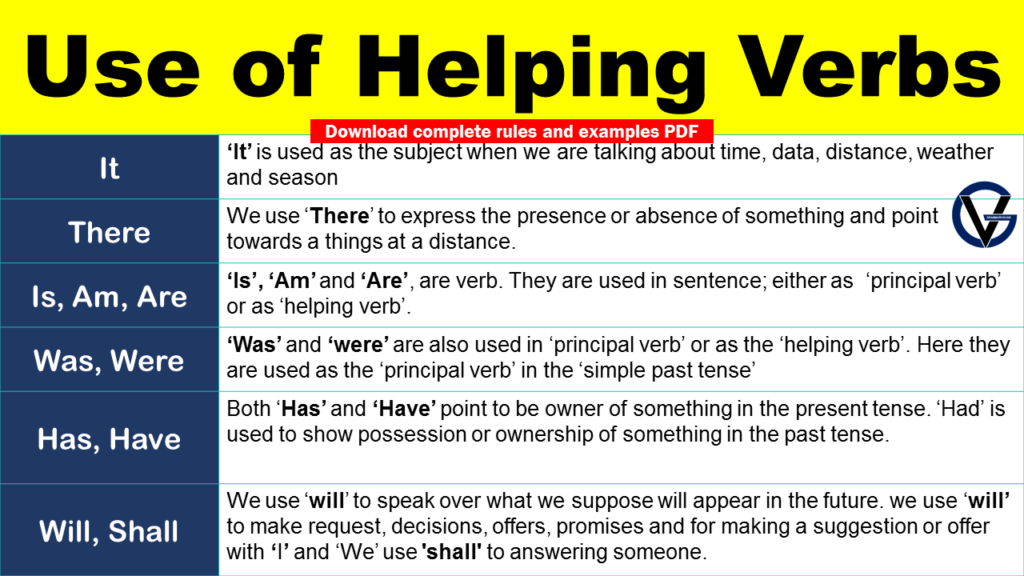
Use of Helping Verbs In Sentence Rules & Examples GrammarVocab
A helping verb (also called an auxiliary verb) is a verb that precedes the main verb in a sentence. The main verb is also known as the principal verb. Helping verbs are used to express tense, ability, or condition. There are only a few helping verbs: be, do, and have, etc. These three helping verbs are used to form the progressive and perfect.

English Auxiliary Verb, Helping Verbs, Definition and Example Sentences; Table of Contents Help
The English tense chart below shows all 12 tenses with sample sentences using regular and irregular verbs. For this tenses table,. Helping Verb (am/is/are) + Main verb + ing: My students are writing their Christmas essays. Present Perfect: Helping Verb (have/has) + Past participle of the main verb:
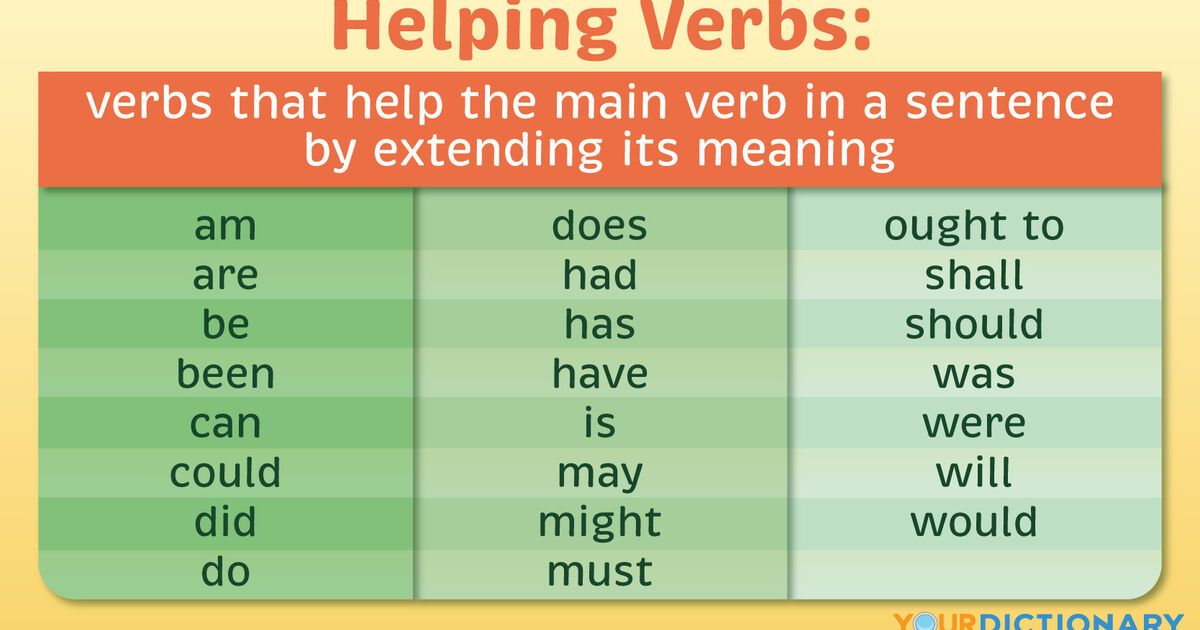
Helping Verbs Meaning and Types (With Examples) YourDictionary
What are helping verbs? Helping verbs, also called "auxiliary verbs," are verbs that don't have a specific definition by themselves, but instead "help" the main verb of the sentence. A lot of English learners make mistakes with helping verbs in English, so here's a complete guide to using this type of verb! Helping Verbs List. Basic.

Helping Verb Tense Chart Sixteenth Streets
helping verb. C. helping verb. Stuck? Review related articles/videos or use a hint. Report a problem. Learn for free about math, art, computer programming, economics, physics, chemistry, biology, medicine, finance, history, and more. Khan Academy is a nonprofit with the mission of providing a free, world-class education for anyone, anywhere.
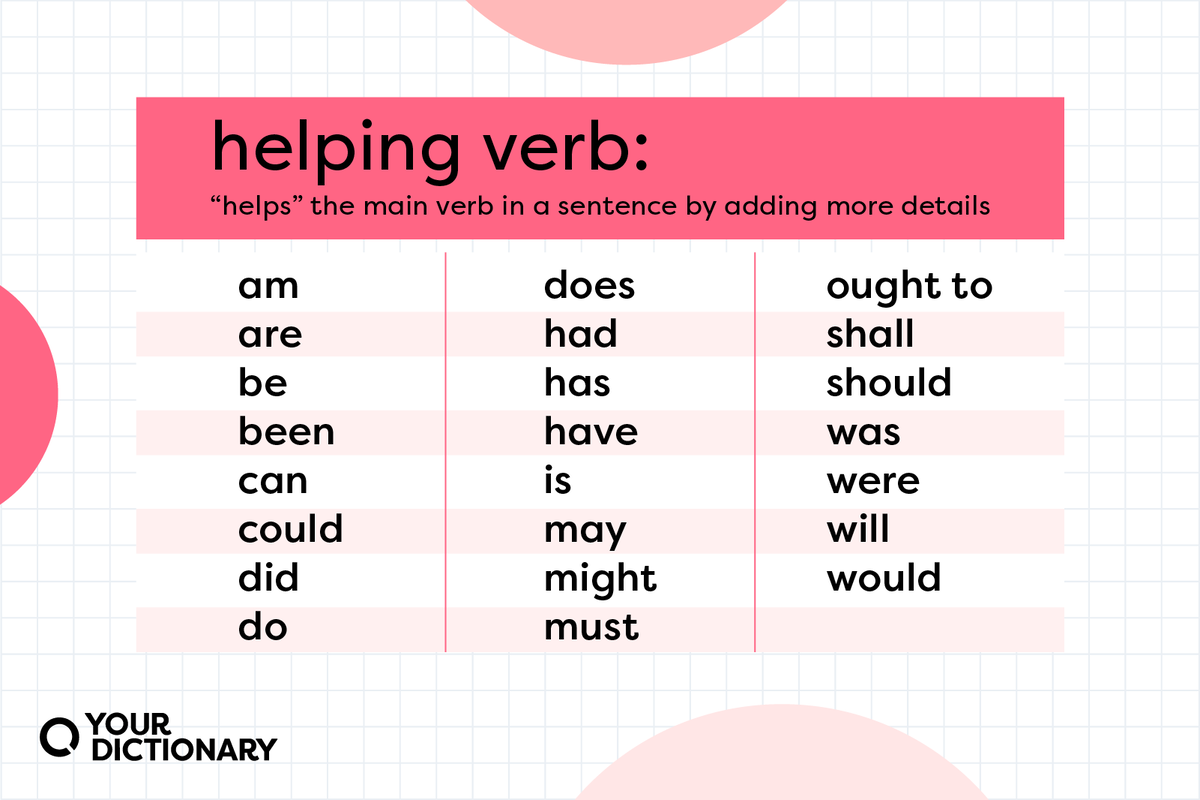
Helping Verbs Meaning, Types, and Examples YourDictionary
Helping verbs work with action and being verbs to give more information about when or how an action is happening. Some verbs always need action verbs. For example, the action verb "been" needs the helping verb "have.". Word charts are the perfect place to integrate social studies and science lessons into writing. Example Sentences: A.

Helping Verbs List and Examples EngDic
Grammar Parts of Speech Verbs Helping Verbs: Meaning, Types, and Examples By Jennifer Gunner, M.Ed. Education , Senior Writer Updated February 15, 2023 Image Credits Helping verbs "help" the main verb in a sentence by adding detail to the main verb. There are two types of helping verbs.
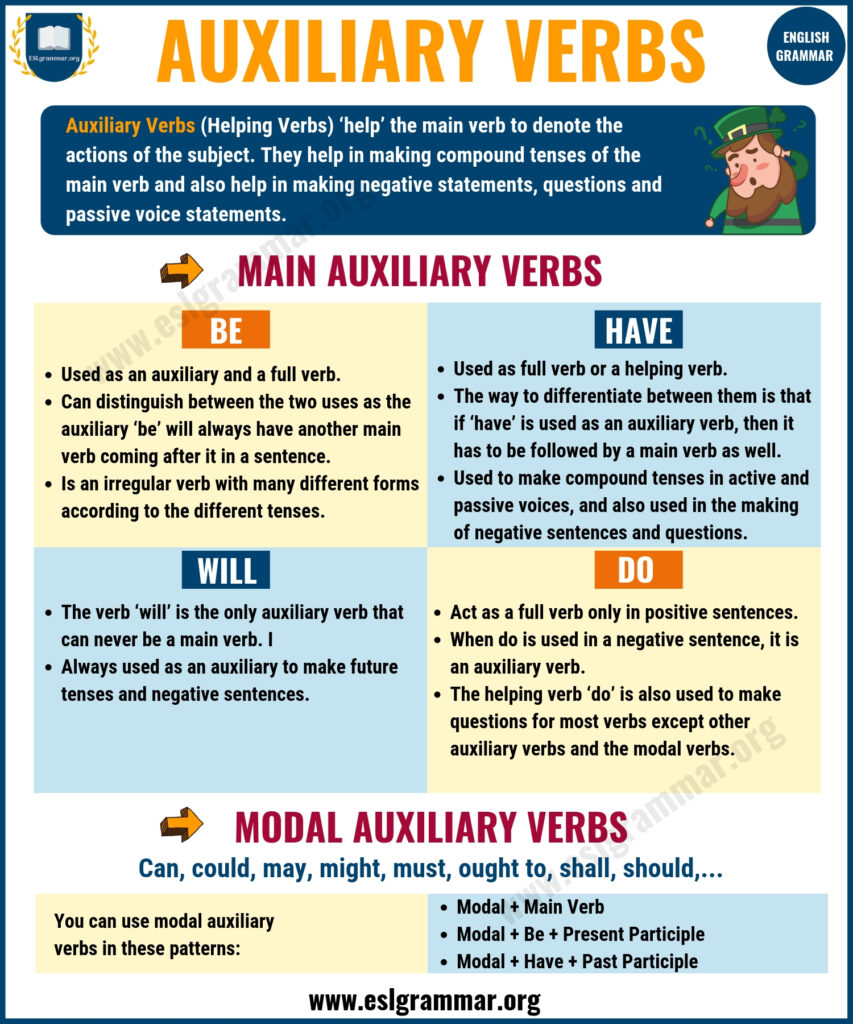
Helping Verbs (Auxiliary Verbs) List, Rules and Examples ESL Grammar
Helping verbs, also known as auxiliary verbs, are used for many reasons in English. They allow us to construct sentences and questions and to demonstrate times. They also help us to differentiate between active and passive voice and question tags.
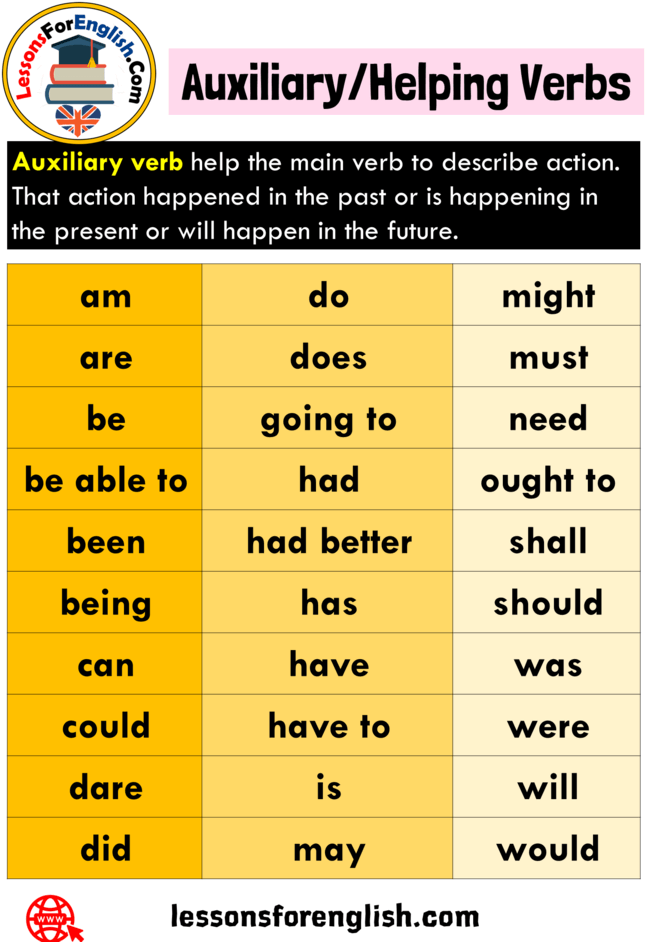
24 Helping Verbs, Definition and 20 Example Sentences with Helping, Auxiliary Verbs Lessons
What is a helping verb? Learn helping verbs list with grammar rules and examples to improve your English. Contents Auxiliary Verbs/ Helping Verbs Auxiliary Verb Definition Helping Verbs List Auxiliary Verb: BE Auxiliary Verb: HAVE Auxiliary Verb: WILL Auxiliary Verb: DO Modal Auxiliary Verbs Auxiliary Verbs/ Helping Verbs Auxiliary Verb Definition
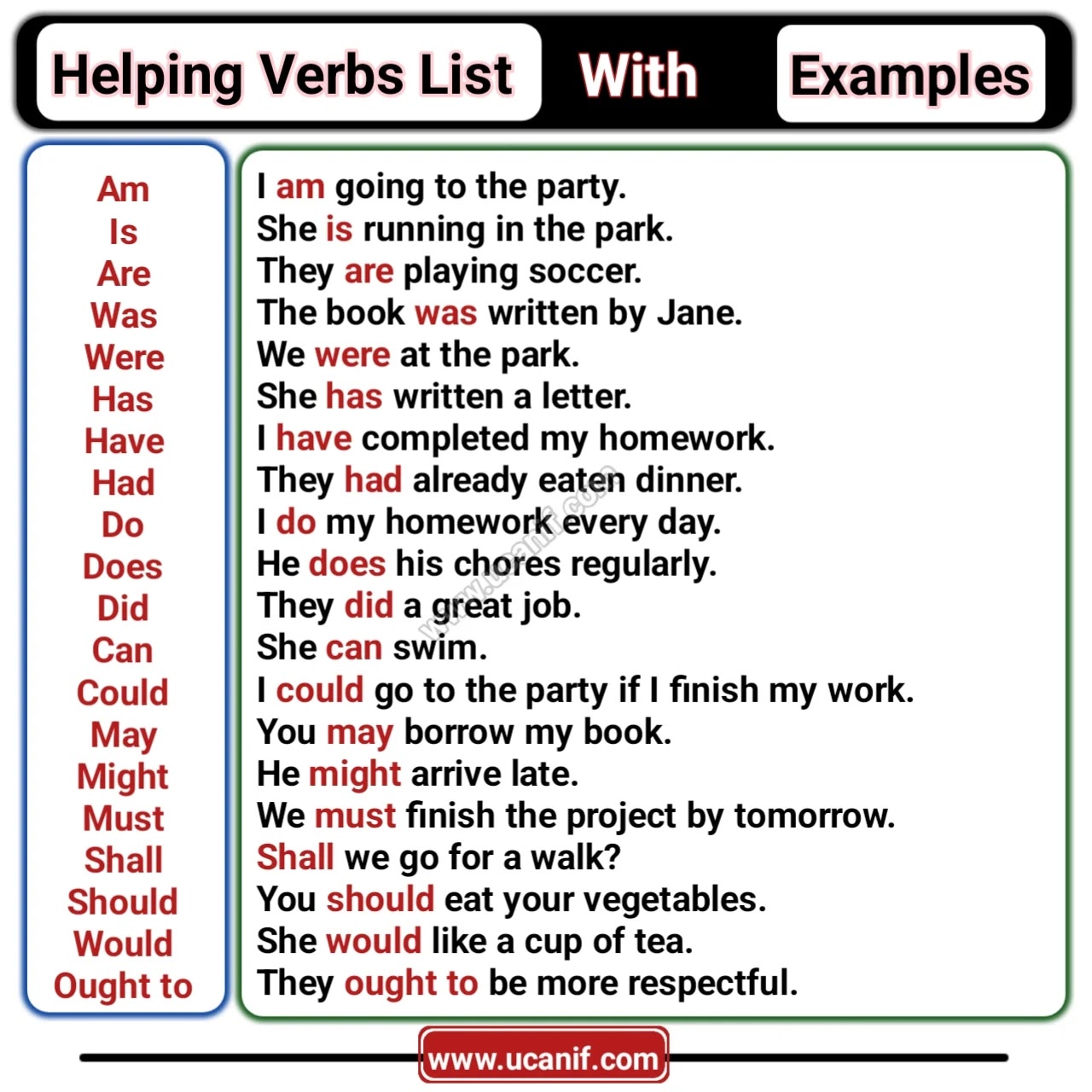
Helping Verbs List with Useful Examples and Usage
What Is a Helping Verb? Helping or auxiliary verbs are exactly how they sound. They "help" another main verb or principal verb and the rest of the sentence by expressing time or giving other information. The three main helping verbs in the English language are be, do, and have. Here are some examples of helping verbs in sentences.
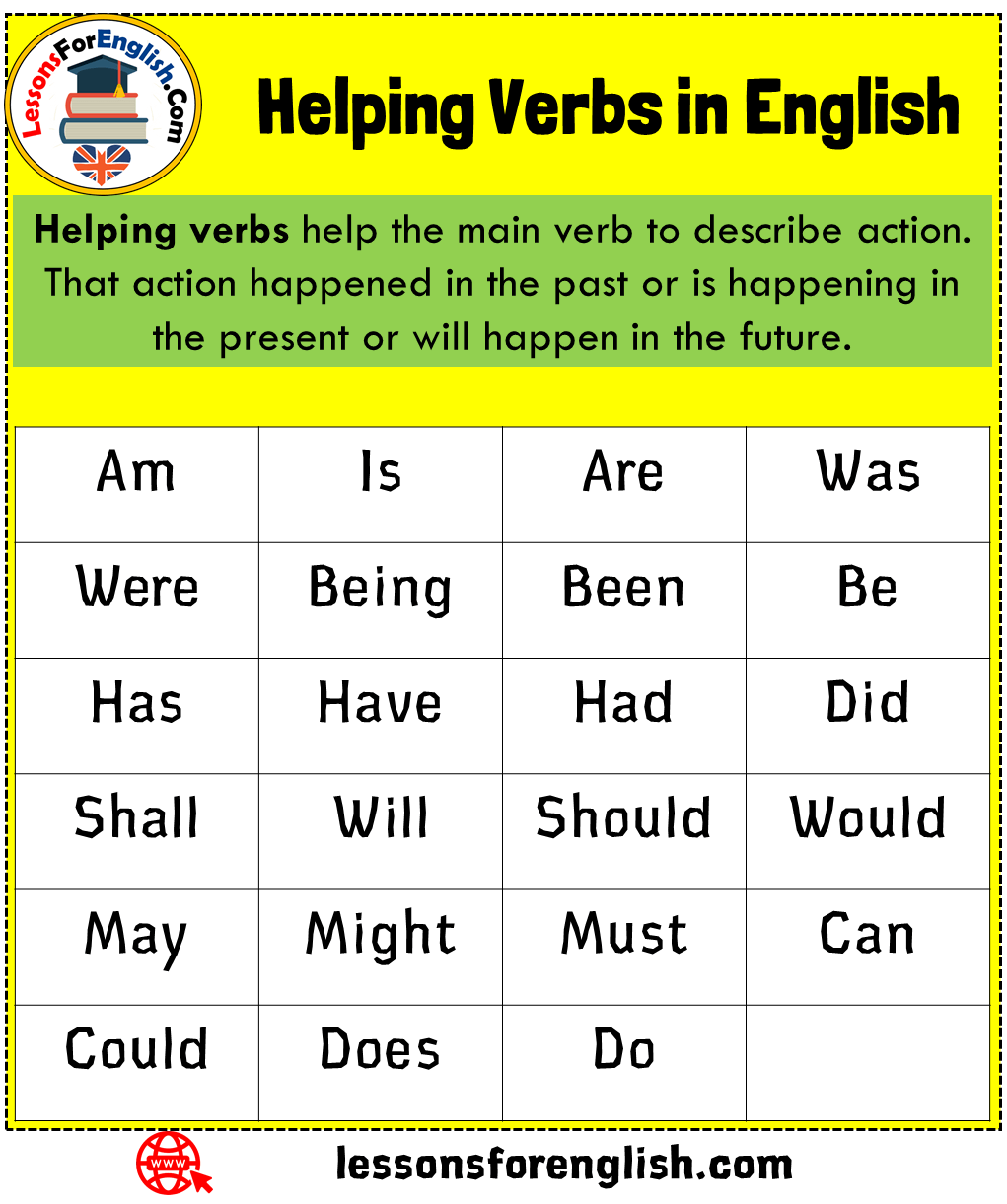
Helping Verbs in English Lessons For English
1. The Venn Diagram (above) 2. The Two-Column Memorization List (below) The Two-Column Memorization List The following two-column list is divided up in order to help with easy memorization. Also, notice that the first eight words on both lists are the same exact words. Helping Verbs vs. Linking Verbs